Charger TrustFire TR-005
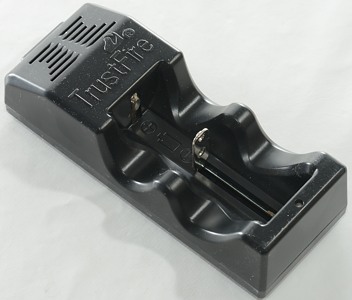
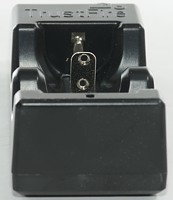

The TrustFire brand covers many different flashlights, batteries and chargers, but usual the quality is a bit low. Here I am testing a single channel LiIon charger that can charge batteries up to 26650 size.
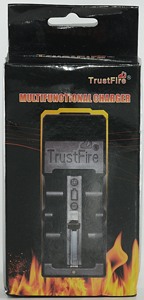
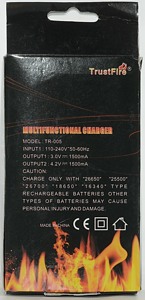
The charger is sold in a cardboard box. The package lists the specifications and supported battery sizes.
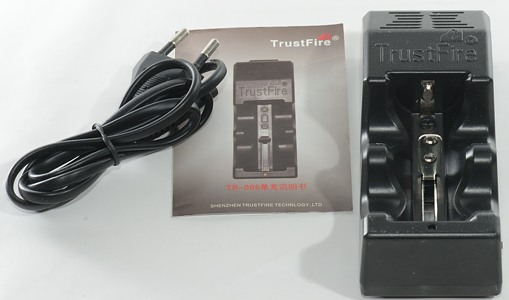
The box contained the charge, a mains cable and a instruction manual.
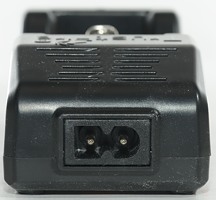
The charger has a universal mains input (110-240VAC 50/60Hz).
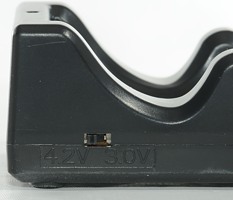
The charger has a small switch to change between 3 volt and 4.2 volt charging, or more correctly between 3.6 volt and 4.2 volt charging.
The switch is very discreetly placed and there is no indicator on top of the charger to show what is selected, this is not a very good solution.
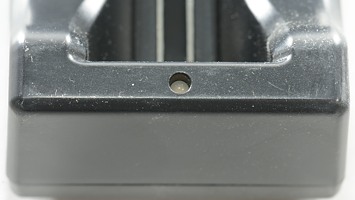
The charger has a led to show the charge status. As usual red is charging and green is finished (More or less).
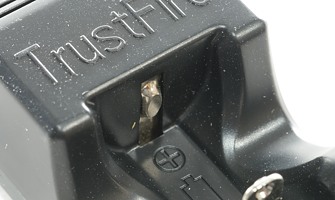
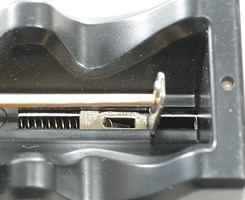
The charge slots can handle from 30.5mm to 72.3mm long cells, including flat top cells. The slider works fine.






The charge current is too high for normal 16340 and 14500 batteries, but can be used for IMR 16340/14500 batteries.
The charger can handle 70 mm long batteries, inclusive flat top cells.
Measurements
- In 4.2V mode the change betweem red and green led is at about 4.2 volt.
- In 4.2V mode the charger will stop charging at about 4.23 volt
- In 3V (LiFePO4) mode the change betweem red and green led is at about 3.5 volt.
- In 3V (LiFePo4) mode the charger will stop charging at about 3.9 volt
- The charger will restart if the battery voltage drops, battery is reinserted or the power cycled.
- The charger will charge from 0V with about 1.4A, the current will drop with raising voltage.
- Without power the charger will discharge a battery with about 0.7mA
.png)
The charger does not use a CC/CV algorithm, but is more like a constant voltage with a series resistor. This means high current when starting the charge, but it will soon drop, making the charge time rather long. This part is fine for the battery.
When the battery is full the charger will not stop charging, it does just change the led to green, but continue to charge, this will wear the battery down, if the user does not remove it within a few hours after the finish light turning on.
.png)
A 3400mAh cell is slower.
.png)
The 2600mAh cell needs a higher charge voltage, during the charger. This means lower charge current and longer charge time. It takes longer to charge a 2600mAh cell than a 3100mAh cell!
.png)
My old 16340 cell works fine with this charging algorithm.
a.png)
When starting charging the current is rather high and the temperature will raise a bit.

M1: 45,1°C, M2: 56,7°C, M3: 66,8°C, HS1: 92,9°C
The charger has a very hot spot on the plastic.
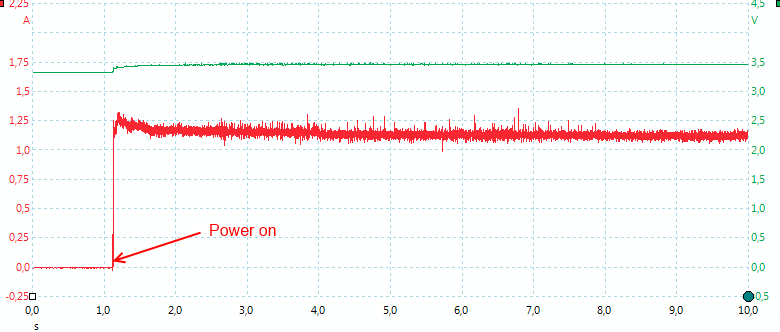
When power is turned on the charger starts charging immediately, there is no microprocessor that needs to do some checking first.
LiFePO4 (IFR) charging
Switching to 3.0V charging, the charger can be used for 3.2 volt LiFePO4 cells.
.png)
The charger reports battery full a bit to early, it does not stop charging but continues to charge the battery beyond the full voltage.
The charger passed an isolation test with 2500 volt, but failed a 5000 volt test, this makes the charger acceptable for 110VAC usage, but doubtful for 230VAC usage.
Conclusion
The charger will charge the cells, but it is rather slow and the missing termination is not very good. I do not like the very discrete switch.
Notes
Here is an explanation on how I did the above charge curves: How do I test a charger

















.png)
.png)
.png)
.png)
a.png)


.png)